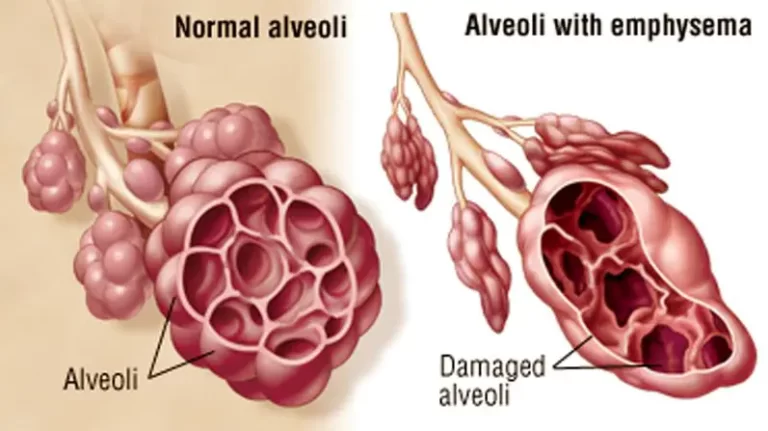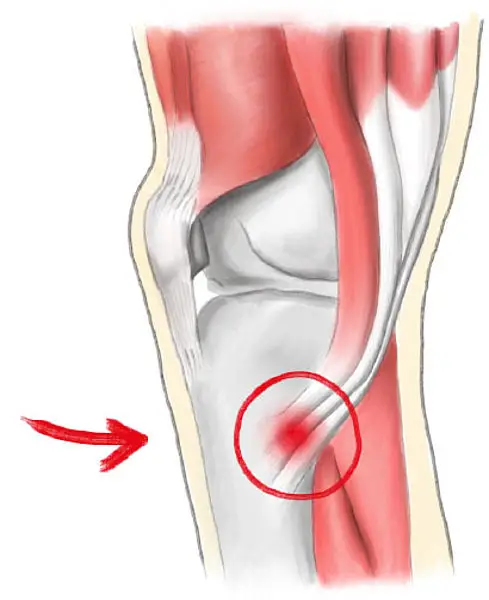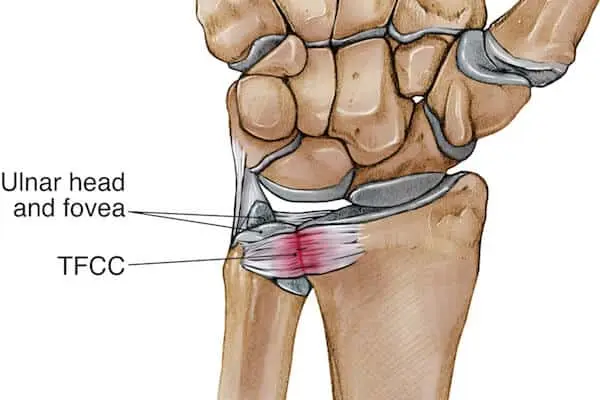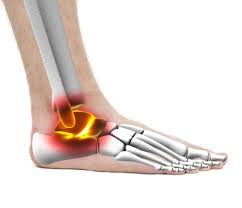Vitamin B6 Deficiency
What is a Vitamin B6 Deficiency?
Vitamin B6 deficiency, a condition arising from inadequate levels of pyridoxine, a water-soluble vitamin, can significantly impact various physiological functions essential for overall health. As a pivotal player in more than 100 enzymatic reactions, vitamin B6 is crucial for amino acid metabolism, neurotransmitter formation, and hemoglobin synthesis.
This deficiency can result in a spectrum of health issues, ranging from mild symptoms such as fatigue and irritability to more severe complications like anemia, neuropathy, and impaired cognitive function.
Many foods, such as meat, fish, nuts, beans, cereals, fruits, and vegetables, include water-soluble vitamin B6. As a coenzyme, vitamin B6 is involved in over 100 metabolic reactions. It aids in the production of hemoglobin, interleukin-2, and neurotransmitters.
A lack of vitamin B6 can cause glossitis, rashes, anemia, convulsions, and changes in mental state. In addition to reviewing vitamin B6 deficient diagnosis, assessment, and therapy, this exercise emphasizes the importance of the interprofessional team in diagnosing and treating individuals with this problem.
Objectives Vitamin B6 Deficiency
- Determine the conditions that increase the risk of vitamin B6 insufficiency.
- Explain the pathogenesis of a B6 vitamin deficiency.
- Describe the symptoms and indicators of a B6 vitamin shortage.
- Describe the significance of interprofessional team members working together to enhance the outcomes for patients who are deficient in vitamin B6.
One essential component found in all living things’ cells is vitamin B6. Numerous foods, such as meat, fish, nuts, beans, grains, fruits, and vegetables, contain this water-soluble vitamin.
Vitamin B6 is also included as a supplement to processed meals and nutritional powders, and it is a component of adult and pediatric multivitamin formulations. Mammals contain six naturally occurring vitamins or active forms of vitamin B6.
Pyridoxine, pyridoxal, and pyridoxamine are the most prevalent. The latter is chemically distinct from the previous two due to the presence of a 2,5′ phosphate ester and an amine group. The active coenzyme forms pyridoxal 5’phosphate (PLP) and pyridoxamine 5’phosphate (PMP) are the two most important esters.
Esters are the main forms of vitamin B6 found in meats, whereas pyridoxine, a less accessible plant source, is the main source.
The typical vitamin found in multivitamin pills is pyridoxine. Vitamin B6 is a coenzyme that participates in more than 100 enzymatic processes, such as the metabolism of lipids, amino acids, and carbohydrates. It contributes to glycogenolysis and gluconeogenesis.
Transamination and decarboxylation, the first stages of porphyrin production, depend on vitamin B6. Pyridoxine affects immunological function through its participation in the creation of interleukin- and cognitive development through its involvement in neurotransmitter synthesis.
It is also necessary for the manufacture of hemoglobin. Sufficient vitamin B6 is necessary for the development of the fetal brain and is maintained during infancy.
Pregnant and nursing women need larger quantities of vitamin B6 than other groups, with recommended daily allowances (RDAs) depending on age and life stage.
Causes of Vitamin B6 Deficiency
Vitamin B6 shortage may be avoided with a diversified and sufficient diet. Good sources of vitamin B6 include fish, chicken, organ meats, potatoes, grains, fortified cereals, soy products, legumes, and non-citrus fruits.
Deficiency in vitamin B6 is frequently linked to deficits in other vitamin Bs, including folic acid and vitamin B12. People who suffer from obesity, protein-energy malnutrition, and persistent alcoholism have low plasma levels of active vitamin B6.
Vitamin B12 insufficiency is predisposed by pregnancy, hypertension and eclampsia, malabsorptive conditions such as celiac disease and inflammatory bowel disease, and bariatric surgery.
Individuals with autoimmune illnesses and renal impairment are among the other at-risk categories that may have vitamin B6 deficiency due to poor intake or higher metabolic needs.
Patients with chronic renal failure frequently have low serum PLP concentrations and may show signs and symptoms of vitamin B6 insufficiency, especially if they are receiving hemodialysis or peritoneal dialysis.
Individuals who suffer from autoimmune conditions like rheumatoid arthritis have heightened vitamin B6 catabolism. A larger recommended daily amount (RDA) of vitamin B6 is necessary for both disorders.
Vitamin B6 insufficiency can be caused by drug interactions. Isoniazid (INH) competitively reduces pyridoxine’s activity in TB patients, hence regular supplementation is advised. Levodopa and penicillamine have the potential to disrupt B6 metabolism as well.
Vitamin B6 can be more easily broken down by some anticonvulsants, such as phenytoin, carbamazepine, and valproic acid, which might result in a deficit.
Epidemiology
One of the most prevalent nutritional deficiencies, vitamin B6 deficiency is thought to affect 10% of Americans, according to estimates from the Centers for Disease Control (CDC). Compared to marginal insufficiency, overt symptomatic deficiency happens less frequently.
Inadequate intake, poor gastrointestinal (GI) absorption, liver and renal dysfunction, protein-energy deficiency, and medication interactions are risk factors for low vitamin B6 levels.
People who are undernourished or who reside in nations with inadequate resources are among the populations most at risk for having poor nutritional intake. Because water-soluble vitamin B6 is not stored by the human body, it must be consumed daily.
Meat seems to have a higher bioavailability than plant sources. This might have clinical significance for kids and adults who only eat plant-based foods and could benefit from supplementation. Pyridoxine hydrochloride is the typical vitamin B6 vitamin found in multivitamin pills.
Pathophysiology
The liver’s mitochondria and cytoplasm convert vitamin B6 at the cellular level to produce its active form, pyridoxal 5′-phosphate (PLP), which is mostly absorbed in the jejunum.
The kidneys eliminate this phosphorylated version of the vitamin, which is then transformed into 4-pyridoxic acid. Oral stomatitis, glossitis, and cheilosis are brought on by a marginal vitamin B6 deficit. There may also be perplexity, melancholy, and irritability.
Adults who are severely deficient may have convulsions, microcytic anemia, and seborrheic dermatitis. Administering pyridoxine can alleviate severe, refractory seizures in newborns and babies with an inborn defect in pyridoxine metabolism.
These are brought on by an uncommon autosomal recessive disorder, and pyridoxine or pyridoxal-5′-phosphate treatment typically makes them go away.
Additionally, there have been few instances of pyridoxine-dependent seizures in young children whose nursing moms are undernourished and deficient in vitamin B6.
A shortage in vitamin B6 during pregnancy has been associated with a higher risk of premature delivery and early pregnancy loss. All women of reproductive age should get enough vitamin B6 from their meals or supplements because many pregnancies are unexpected.
Trials are ongoing to investigate the potential connection between vitamin B6 deficiency and cancer, cognitive decline, and cardiovascular disease.
Higher homocysteine levels are linked to vitamin B6 deficiency and are a known risk factor for the development of atherosclerotic cardiovascular disease. Beyond the advised dietary consumption, there isn’t any conclusive evidence to support the use of supplements for these illnesses.
Vitamin B6 supplementation has been shown in certain trials to reduce symptoms of premenstrual syndrome, such as moodiness, irritability, and forgetfulness.
Treatment with vitamin B6 is another recommendation made by the American College of Obstetrics and Gynecology for hyperemesis gravidarum. It is unknown how the therapeutic effect works and is not believed to be connected to any underlying deficiencies.
Toxicokinetics
Three water-soluble vitamins—ascorbic acid (vitamin C), niacin (vitamin B3), and vitamin B6—can be harmful in high concentrations. It is uncommon for vitamin B6 toxicity to arise from eating just naturally occurring foods.
Movement problems and sensory neuropathies might arise from months or years of high-dose supplementation.
People who are affected may feel colder, touch, and vibration less frequently, and they may also have poor balance and potentially severe accidents. Even after stopping the vitamin B6, neuropathy could not be curable.
Vitamin B6 supplements with no more than 100 mg per day are regarded as safe. The majority of neuropathy case reports involve daily dosages over 250 mg and sometimes up to 1000 mg, or almost 800 times the average daily food consumption.
Typically, symptom intensity is dose-dependent. Clinical signs of toxicity include photosensitivity, GI symptoms such as nausea and indigestion, and painful skin eruptions in addition to neuropathy.
Usually, these non-neurologic symptoms go away after the vitamin is stopped. Medication interactions with high-dose supplements can also occur with levodopa, phenobarbital, and phenytoin.
History and Physical
The medical history has to be specific and age-oriented. The nutritional state of the mother and the potential for an inherited mistake in pyridoxine metabolism should be taken into consideration when a newborn exhibits seizures.
Unlike other types of seizures, pyridoxine-dependent seizures are not treated with standard anticonvulsants. However, they do often react quickly to pyridoxal phosphate treatment.
When a newborn or early infant exhibits seizures, this hereditary illness should always be taken into consideration, despite the fact that it is quite rare.
Past medical diagnoses, operations, current symptoms, a detailed evaluation of systems, prescription drugs, dietary supplements, and nutritional intake should all be included in the history beyond infancy.
Individuals with somewhat deficient or borderline vitamin B6 levels frequently show no symptoms.
Vitamin B6 insufficiency is not the only cause of the typical signs and symptoms of moderate deficiency, which also include peripheral neuropathy, stomatitis, glossitis, cheilosis, and changes in mental state.
Seborrheic dermatitis and anemia can be caused by a severe deficit. The prior medical history will disclose malabsorptive disorders, such as inflammatory bowel illness, celiac disease, or intestinal surgery, particularly bariatric surgery, that may result in a vitamin B6 deficit.
Weakness, changes in mental state, paresthesias, or symptoms related to the skin might indicate the diagnosis during system examination. Upon doing a thorough physical examination, one may find indications of peripheral neuropathy, paralysis, oral mucosal diseases, and skin issues.
Evaluation
Vitamin B6 insufficiency that is early or subclinical may show few, ambiguous, or no symptoms at all. Suspicion of a clinically significant deficit should be raised in cases of new-onset sensory neuropathy, altered mental state, anemia, adult dermatitis, or infantile convulsions.
B6 vitamers in serum, plasma, erythrocytes, and urine are measured using direct biomarkers. The most used method for determining vitamin B6 status is the plasma PLP concentration. It is a measure of liver concentration and is not much affected by changes in food.
The test isn’t always readily accessible, and there might be a delay in the findings. More than thirty nmol/l is deemed enough, between twenty and thirty nmol/l borderline, and less than twenty nm/l deficient.
An alternate method of detecting vitamin B6 indirectly involves measuring the amount of xanthurenic acid, an amino acid catabolite of tryptophan, excreted in the urine after a determined tryptophan bolus.
Elevated levels might be a sign of insufficient active vitamin B6, which is required to synthesize the amino acid tryptophan. After a 2-gram tryptophan load, urinary excretion of xanthurenic acid is typically less than 65 mmol/day.
If xanthurenic acid excretion exceeds this threshold, it may indicate aberrant tryptophan metabolism brought on by insufficient vitamin B6. In critically sick patients, erythrocyte transaminase activity can be a more reliable indicator of vitamin B6 status as it is a functional test of pyridoxine status.
Excretion of 4-pyridoxic acid in the urine, sometimes referred to as “urinary pyridoxic acid,” when it exceeds 3.0 mmol/day, may be a sign of sufficient short-term vitamin B6 sufficiency.
Treatment of Vitamin B6 Deficiency
The age and severity of the patient’s symptoms determine the appropriate dosage of therapy for vitamin B6 deficiency syndromes and disorders. There are parenteral and oral forms of the vitamin available.
Give 100 mg IV pyridoxine to newborns suspected of having pyridoxine-dependent seizures. Treatment for infants with pyridoxine-dependent seizures must last a lifetime. Doses ranging from 5 to 20 mg/kg/day to 500 mg/day have been suggested.
For children, the recommended daily amount (RDA) of vitamin B6 is between 0.5 and 1 mg, whereas for adults over 50, it rises to 1.7 mg for males and 1.5 mg for women. Pregnant women should take 1.9 mg daily, while lactating women should take 2 mg daily.
[Vitamin B6 Fact Sheet 2022, NIH Dietary Supplement]. Oral vitamin B6 from supplements and a diversified, nutrient-rich diet are sufficient therapy for those with a deficit.
In good health People who consume meats, fish, nuts, whole grains, starchy vegetables, and egg yolks will probably receive enough vitamin B6 from their diet. Adults who eat a healthy diet are thought to require 6 to 10 mg of vitamin B6 on average.
The majority of dietary sources together have a bioavailability of around 75%. Food processing and cooking might lower bioavailability by 10–50%.
Three times a day, 25 mg of pyridoxine can help alleviate the symptoms of hyperemesis gravidarum. 50–100 mg of pyridoxine is a common dosage that helps treat premenstrual dysphoric disorder symptoms.
Studies have indicated that when paired with calcium, it has a stronger impact. Vitamin B6 metabolism may be disrupted by isoniazid (INH), leading to a deficit. It is recommended that patients undergoing intravenous hemodialysis (INH) for TB supplement with vitamin B6.
The recommended daily dose for prophylaxis is 6–50 mg; if neurotoxicity and a proven vitamin B6 deficit occur, especially in patients receiving larger doses of INH for treatment of drug-resistant TB, the amount should be increased to 100–200 mg.
When treating refractory INH overdose-induced seizures, vitamin B6 treatment may be life-saving. The initial dosage of 1 to 4 grams IV is given, followed by 1 gram IM or IV every 30 minutes.
The dose is equivalent to the known quantity of INH consumed, up to a maximum of 5 grams. In rarer situations, vitamin B6 is also recommended. 50 mg is an adjuvant that helps convert glyoxylic acid into harmless glycine in cases of ethylene glycol poisoning.
Pyridoxine 25 mg/kg IV is given to patients with Gyromitra mushroom poisoning in order to stop or manage seizures.
Differential Diagnosis
Because vitamin B6 insufficiency is linked with a wide range of symptoms and clinical findings, there is a lengthy differential diagnosis list.
The characteristic lesions of cheilosis, stomatitis, and glossitis in the mouth are similar to illness states brought on by a deficiency in other vitamins, such as folic acid, and thiamine. Anemia can have several contributory diseases, and it is important to take into account more prevalent causes as well.
It is possible for psychiatric symptoms like sadness and cognitive impairment to have different biological or functional causes. The right differential diagnosis for each patient will often result from a comprehensive medical history and physical examination.
Prognosis
A diversified diet or oral supplements can help avoid vitamin B6 deficiency, which can be efficiently addressed with appropriate oral or parenteral pyridoxine. When vitamin B6 insufficiency is suspected, identified, and treated, the prognosis is favorable, especially for those with illnesses that require higher than the usual recommended daily allowance (RDA).
Complications
A high consumption of vitamin B6 from natural sources has no known negative effects. On the other hand, over-supplementing may result in permanent sensory and peripheral neuropathy.
Deterrence and Patient Education
Vitamin B6 insufficiency is more likely to occur in those who have impaired renal function, alcohol use disorder, malabsorption, or advanced age. It is important to motivate them to take vitamins that are suitable for their age and health.
Individuals having metabolic and bariatric surgery should be constantly monitored for increased vitamin B6 demands since malabsorption can lead to deficiency.
Without a poor diet or long-term medical issues, the danger of overt vitamin B6 is rare in the United States and other industrialized countries.
Patients who arrive with signs or symptoms such as oral lesions, persistent rashes, or neuropathy should be tested for vitamin B6 insufficiency, especially in resource-constrained areas across all nations.
The necessity of preventive vitamin B6 supplements should be explained to patients receiving isoniazid (INH) treatment. If they exhibit symptoms, they must be evaluated for deficiencies, particularly following six months of treatment.
Pearls and Other Issues
A balanced, nutrient-rich diet can help avoid vitamin B6 insufficiency. Nevertheless, low amounts might exist in the absence of symptoms.
Low levels of vitamin B6 have been linked to a number of chronic illnesses, such as colorectal, breast, and ovarian cancers as well as cardiovascular disease. To avoid such illness states, there aren’t any guidelines as of now for consistently consuming more than the RDA.
To prevent missing a curable diagnosis, a high index of suspicion for vitamin B6 insufficiency is recommended when patients report nebulous or ambiguous symptoms.
Seizures that are reliant on pyridoxine in newborns are quite uncommon. Timely pyridoxine delivery has the potential to save lives, and supplementation has to be ongoing.
Enhancing Healthcare Team Outcomes
All patients should be encouraged to eat a healthy diet by healthcare professionals. On the other hand, those who have autoimmune diseases, prolonged alcohol use, or renal impairment are at risk for vitamin B6 insufficiency.
Vitamin B6 plasma levels may be low in patients with chronic renal failure, particularly in those receiving hemodialysis or peritoneal dialysis.
Increased vitamin B6 catabolism is a common side effect of autoimmune diseases like rheumatoid arthritis, necessitating dietary supplementation.
Physicians and nurses working in emergency rooms should be aware that pyridoxine serves as an emergency counter-adjuvant for isoniazid (INH) overdose and gyromitrin mushroom poisoning.
Levodopa, INH, penicillamine, and some anticonvulsants can all affect how B6 is metabolized. While prescribing these drugs, it is essential to communicate with pharmacists in order to improve patient care.
If supplementation or replacement is given to people with B6 deficiency before serious impairments arise, the result is favorable.
When evaluating their patients, all members of the interprofessional team should take into account the significance of vitamin B6 shortage as well as dietary considerations.
FAQ
What happens when your vitamin B6 is low?
As a coenzyme, vitamin B6 is involved in over 100 metabolic reactions. It aids in the production of hemoglobin, interleukin-2, and neurotransmitters. A lack of vitamin B6 can cause glossitis, rashes, anemia, convulsions, and changes in mental state.
How can I raise my B6 levels fast?
The best foods to eat for vitamin B6 are fish, potatoes and other starchy vegetables, cow liver and other organ meats, and fruit (not citrus).
What is a B6 deficiency called?
Peripheral neuropathy, pellagra-like syndrome, anemia, and seizures are possible symptoms. Antiseizure medications may not be able to stop the seizures, especially in young children.
What fruit is highest in vitamin B6?
The two finest foods high in vitamin B6 are dried pasilla peppers and mamey sapote, which are fruits that provide 42% and 249% of the daily value, respectively.
What happens if vitamin B6 is high?
When doses over 250 mg/day are used over an extended period of time, patients usually exhibit symptoms of peripheral neuropathy, dermatoses, photosensitivity, dizziness, and nausea. Two further morbidities would be dysesthesias and ataxia.
Is B6 better at night or morning?
After waking up is the greatest time of day to take a B vitamin because of its ability to improve energy. Furthermore, current studies suggest that vitamin B-6 may disrupt sleep and cause vivid nightmares. People may want to take them earlier in the day in order to avoid this negative impact.
How can I get B6 daily?
Poultry, fish, potatoes, chickpeas, bananas, and fortified cereals are foods high in vitamin B-6. As a supplement, vitamin B-6 is also available; it is usually taken as a liquid, pill, or capsule for oral use.







